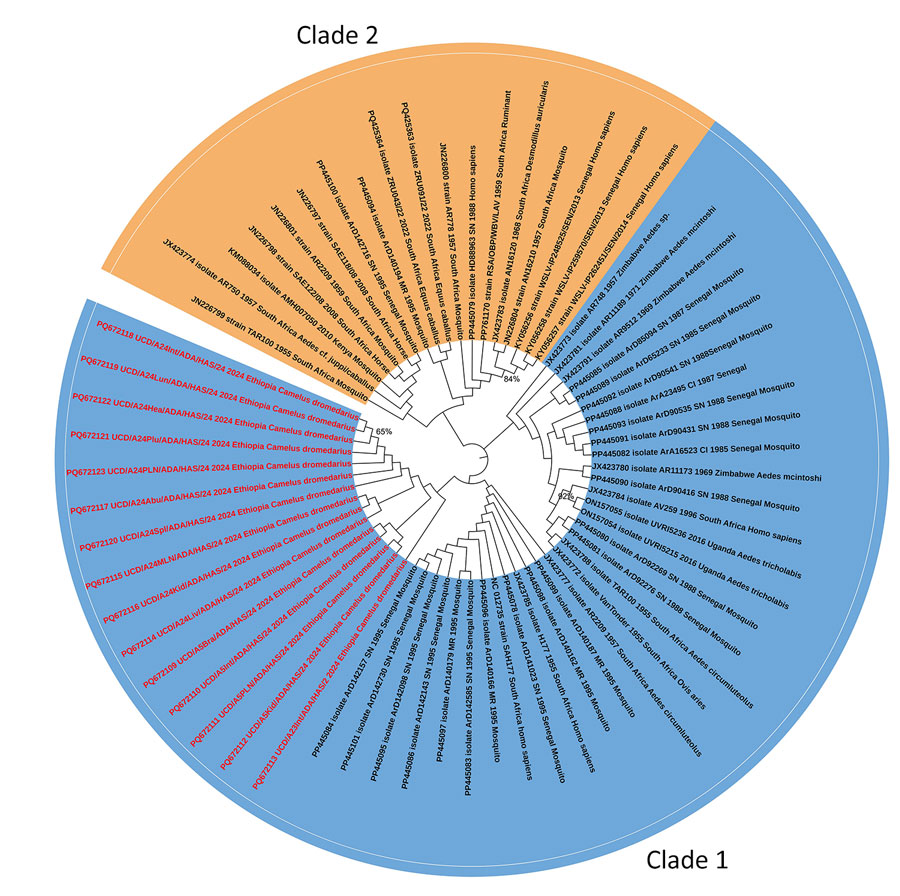Volume 31, Number 6—June 2025
Research Letter
Molecular Detection of Wesselsbron Virus in Dromedary Camels, Borana Zone, Ethiopia, 2024
Figure 2

Figure 2. Phylogenetic analysis of Wesselsbron virus (WSLV) in dromedary camels, Borana Zone, Ethiopia, 2024. The maximum-likelihood phylogenetic tree was constructed with 1,000 bootstrap replicates based on 65 partial NS5 gene sequences of WSLV, including the camel-derived WSLV sequences (maximum length 252 bp). The newly identified camel WSLV strains from this study are in red within clade 1.
Page created: April 22, 2025
Page updated: May 28, 2025
Page reviewed: May 28, 2025
The conclusions, findings, and opinions expressed by authors contributing to this journal do not necessarily reflect the official position of the U.S. Department of Health and Human Services, the Public Health Service, the Centers for Disease Control and Prevention, or the authors' affiliated institutions. Use of trade names is for identification only and does not imply endorsement by any of the groups named above.